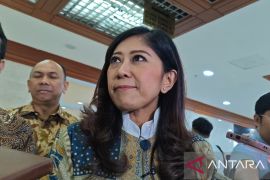"The intervention is intended to ensure sufficient liquidity, both in the forex and Rupiah, while also purchasing government securities (SBN) in the market," BI Governor Perry Warjiyo noted in a statement here on Thursday.
Regarding current developments on the movement of the Rupiah exchange rate, the governor stated that the movements need to be measured relative to other countries.
"The current depreciation of the Rupiah against the US dollar is also occurring in other countries in the region," Warjiyo remarked.
The Rupiah exchange rate is relatively manageable as part of the current global phenomenon.
Moving forward, BI will continue to maintain economic stability amid global economic uncertainties, specifically the Rupiah exchange rate stability.
The widening trade balance and current account deficits until the middle of the second quarter did not indicate that the Indonesian economy was overheating, BI Deputy Senior Governor Mirza Adityaswara earlier stated.
High imports in May were aimed at addressing the long-term economic development needs, Adityaswara stated.
Adityaswara remarked that the trade deficit of US$1.52 billion in May 2018 can add to the current account deficit projected at above 2.5 percent, but it will not exceed three percent of the national gross domestic product in the second quarter of 2018.
Indonesia recorded a trade deficit of $2.38 billion during the period from January to May 2018.
Imports during the January-May 2019 period include those for addressing the long-term economic needs. The imports for infrastructure development were valued at $4 billion; defense, at $1.1 billion; and rice, $400 million.
"Actually, trade balance during the January-May 2018 period suffered a deficit. However, if imports for long-term infrastructure development are excluded, the trade balance will record a surplus," he noted.
Given the assumption, despite a rise in the trade balance and current account deficit, the Indonesian economy is not overheating.
In addition, other indicators, including bank loans that only rose 10.2 percent year-on-year and 2.9-3 percent year-to-date as of May 2018, suggested that the Indonesian economy is in the process of recovery.
Reporter: Azis Kurmala
Editor: Otniel Tamindael
Copyright © ANTARA 2018












